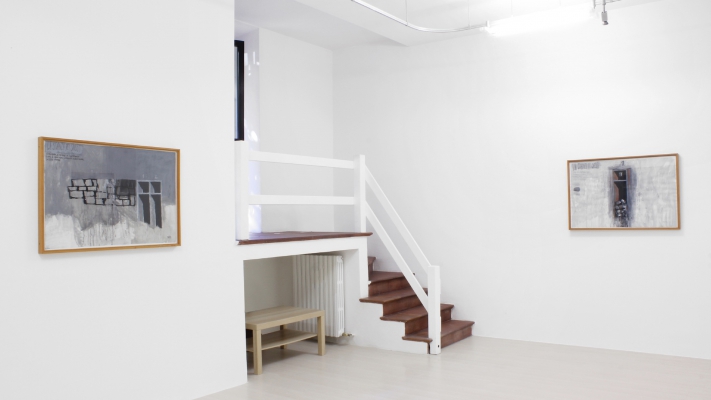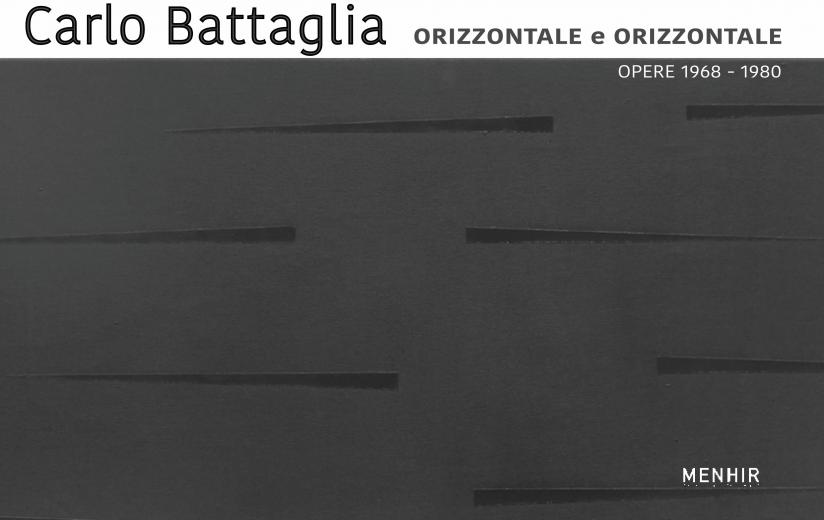The show, titled "Carlo Battaglia. ORIZZONTALE e ORIZZONTALE. Opere 1968 - 1980" ("Carlo Battaglia. HORIZONTAL and HORIZONTAL. Works 1968 - 1980") pays tribute to the Sardinian- born artist exhibiting a dozen masterpieces, chosen among his early paintings. Canvases – often in horizontal size – produced in the years denoting the debut of his career as an artist, usually identified with ‘Analytical Painting’, a categorisation he will always be reluctant to, though taking part throughout the years to a significant number of exhibitions pertaining in different ways to this tendency.
His predilection for the horizontal size constitutes a constant which will last throughout his entire artistic production, especially in that of the Seventies. This dimension allows him to involve the public inviting people to get lost in the iridescent surface of the canvas; running through it from left to right, the spectator’ s look is cradled by the meticulous and steady movement executed by Carlo Battaglia on the medium, which recalls a further element characterising the works by the artist: the sea.
In the words of the curator:“Back in the Seventies his titles are already evocative - Tifeo, Vertiginoso, Brezza, canone conseguente, Ilva, Occaso, Come un giovane mare temerario, … - and almost all refer to the sea (Tifeo is Tifone, while Ilva could be the ancient name of the Isola d’ Elba) which represents the origin, the remote realistic recollection of Battaglia’ s painting, islander from La Maddalena. Just like the myth represents the interpretative root of reality, hence the related myth constitutes the key to understand the abstraction carried out by the artist: inspired by Paul Klee, he accomplishes an abstraction ‘full of memories’, which is actually only one, the endless recollection of the sea. Before achieving the acclaimed unveiling of the subject, taking place in the early Eighties and then preserved until the very end, throughout the Seventies Battaglia does not merely paint the sea, but its sublimation, rather ‘reproducing’ it in the constant and endless movement of pastels or brushes on the paper and the canvas. In the Seventies, his statement claiming that, after all, he had ‘always painted the sea’ would have appeared incomprehensible or the outcome of an intellectual paradox, whilst considering his activity as a whole it would not be possible to argue the contrary.”
The solo show thus ends with the work ‘Come un giovane mare temerario n.5’, which finally discloses and reveals the sea, presented at the Venice Biennale in 1980, where Battaglia was invited to participate with a solo project.
The exhibition, curated by Marco Meneguzzo, on view from March 14th until May 14that the Milan venue, in Via Giuriati 9, aims at enhancing the artistic value of one of the Masters of painting of the Seventies and honors the sea so deeply loved by Battaglia, and his wife Carla.

